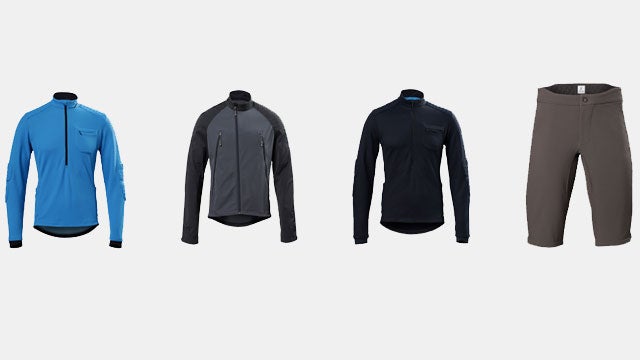When launched their super premium line of mountain bike clothing last fall, I slapped my head in awe over the prices.
There were just two items in the initial line-up. The Soft Shell A/M Shorts were going for a shocking $269. And the autumn-weight long-sleeve jersey, the Sastan, was listed for an eye-watering $327. A month later, Kitsbow added a soft-shell jacket called the Mixed Shell for an even heftier $369.
These price tags seemed totally preposterous to me, though I have to admit that I also admired Kitsbow’s confidence. It takes chutzpah to sell a jersey that costs more than some bicycles.
“Many people’s initial reaction is, ‘That’s ridiculous,’” says Kitsbow co-owner and founder Zander Nosler. “I understand that, but it’s all made in North America, which is one piece of what you are paying for. The second thing is that we are producing products that are handmade, beautifully crafted, and detailed like nothing else out there.”
And the truth is these prices aren’t unprecedented. The friend who told me about Kitsbow referred to the company as “the Assos of mountain biking.” When that Swiss company first approached me, I almost shrugged them off as too outrageous but eventually acquiesced and included their shorts in a test. And good thing because those bibs have since become my hands-down favorites. While I generally feel that differences in apparel are negligible, in the case of , the quality and construction and thought that go into their gear is considerable—and merit the high prices.
Based on that lesson, I agreed to try out Kitsbow. For the past nine months I’ve been riding in the company’s initial offerings.
Jersey
The is my favorite of the bunch. I like the distinctive English hunting jacket styling, with quilted shoulders and elbow pads, because it’s unlike anything out there. It’s not for everyone, though: Speaking with some industry media, before I could volunteer that I liked the Sastan, several of them laughed it off as “that old man’s jersey.” In spite of my age, I’d apparently just entered Masters class.
Fashion preferences aside, the dual-weave fabric—Cordura on the exterior, soft Merino inside—is rugged yet cozy and has held up to months of thrashing. It’s repelled countless errant branches without so much as a snag and shrugged off a couple tough falls in the rocks. And the details are smart and unique, including side pockets to keep sundries away from your pack and a microfiber lens cloth tethered in the front pocket.
Mixed Shell
The is equally compelling. The blend of fabrics—Schoeller softshell in the body and Schoeller USP in the sleeves—makes for a lightweight jacket that’s surprisingly insulating and, though not officially waterproof, has kept me dry on a couple of drizzly mountain adventures. The jacket’s real distinction is the huge, dual-zip, mesh-lined front vents that slash from the top of the pecs all the way to the waist. This design has allowed me to regulate temperature better than any other jacket I’ve ever tried, going from fully zipped on brutally cold mornings to fully unzipped on long hard climbs, and everywhere in between depending on exertion.
Soft Shell Shorts
Finally there’s the , which I also like, though not without reservation. The fit is trim and tailored so getting the right size is critical. I tried 30, 31, and 32, and though the differences were small and I could fit any of them, I settled on the middle size. The quilted waist is comfy and cut high to mate well with packs, and the back-of-the-quad zippered pockets aren’t initially intuitive but end up working great.
The Schoeller Dryskin fabric is both tough and fairly soft, though it’s lack of stretchiness is my greatest misgiving. While the shorts wear well initially, after a handful of hours in the saddle they bag out a little and can sag in the rear. And there’s no waist adjustment to take up the slack. When queried about the issue, Nosler suggested that perhaps I need a size down. He also points out that Kitsbow has since launched a similar short with a waist adjustment for those who prefer it.
The Bottom Line
So the product ranges from good to exceptional, but does it merit the cost?
That depends on whether the clothing fits you and, if so, how much you value quality. With the exception of the droop of the shorts, the apparel all works well and looks great. And the detailing and quality are exceptional, which is perhaps the company’s greatest selling point.
“Buy the best, buy once,” Nosler told me. “I have a closet full of gear I’ve bought over the years, and all together it cost a lot more than a Kitsbow kit would run you, but none of it works as well. Our point isn’t to make expensive clothes. We’re just trying to make the best. Some people will value that, but not everyone. And that’s fine.”


